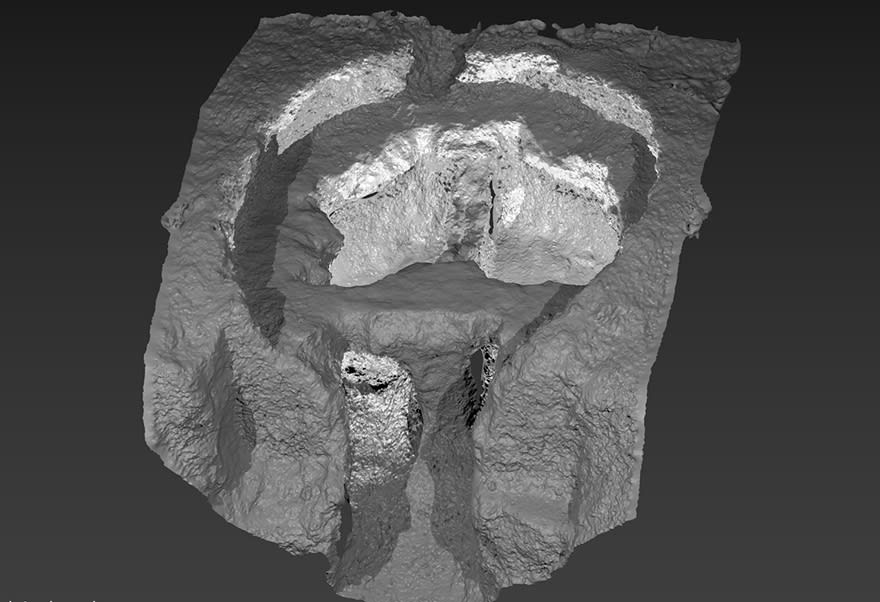A technique for making an accurate 3D photographic record of archaeological finds on construction sites at a fraction of the usual cost is making its debut in the UK.
The system makes use of advances in photogrammetry – the science of taking measurements from photographs – and the ability of software systems to make a continuous collage from a number of digital photographs.
The result is a high-resolution 3D image that acts to preserve historical remains for publication and future research, and can be incorporated into an ongoing BIM model to help coordinate the later construction with the archaeology.
One company that is pioneering photogrammetry in construction is Edinburgh-based Headland Archaeology. Tim Holden, managing director, says the system will transform the process of recording sites when the excavation phase has concluded and the material is still (before removal).
He told BIM+: “In the past we often had quite large numbers of people on site making a detailed record, and that’s the bit that we’re trying to speed up. The photographic software is coming on in leaps and bounds so that rather than having to stand there and draw things with tracing papers and pens we’re now taking oodles of photographs and digitising them on the spot.”
The system produces levels of accuracy comparable to a £50,000 laser scanner, with a margin of error of less than a centimetre in the case of larger structures, and about a millimetre with smaller finds, such as skeletons.
The level of detail obtainable is shown in this fly through of a trench on Headland’s Facebook page.

The technique can record smaller details to an accuracy of about a millimetre
The software works by anchoring onto points of high contrast in a scene and using them to calculate the position of the camera when the photograph was taken. “The result is an image that can be examined from underneath, above, sideways, and that we can cut sections through,” says Holden.
The main attraction of the system for contractors and their clients is the lower costs it entails. The fee for an archaeological specialist is reduced because fewer people are required to record the finds in situ, and the process takes a fraction of the time that it used to.
Holden says: “How much cheaper depends on the kind of thing we’re recording. The system doesn’t work on flat things that don’t have points for it to anchor to. But things that could take days now take hours. It used to take half a day to record a skeleton, and now we can do it in the time it takes to take 20 pictures.
“It works brilliantly for walls, and buildings where you’ve only got the footings left. In the past we had to place tracing paper over graph paper and we could be there for quite a few days drawing a building, and we often get these sites in the middle of winter and you can’t really draw wearing gloves.”
He adds that photogrammetry software is particularly good for recording the interior and exterior of entire buildings. “You can zoom in and out as well as looking at plans so you can re-evaluate in a way that you couldn’t from a drawing.”
The final image is automatically geo-referenced, so it can be located on a map of the wider area, and it can also be slotted into a BIM model.
Holden says this can help engineers to set out the site in such a way that dumps and crane bases avoid the historical material.
There are many photogrammetry software packages on the market, ranging from free open-source applications to packages costing in excess of £2,000.
The photographic software is coming on in leaps and bounds so that rather than having to stand there and draw things with tracing papers and pens we’re now taking oodles of photographs and digitising them on the spot.– Tim Holden, Headland Archaeology
Comments
Comments are closed.












I have tried this technology earlier and found works well in capturing the structures and creating 3D mesh, Point clouds that can be further used in BIM workflow.
Thanks,
Partha